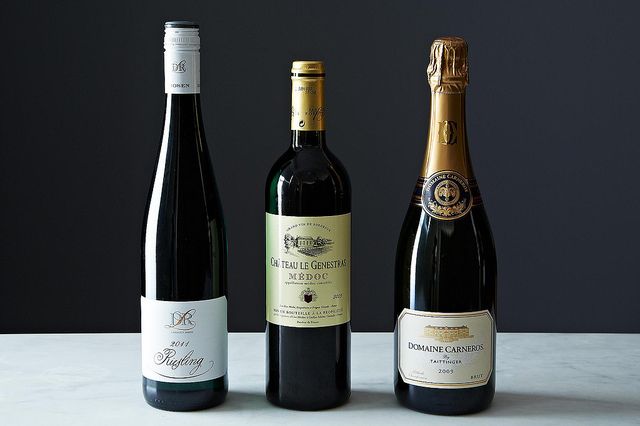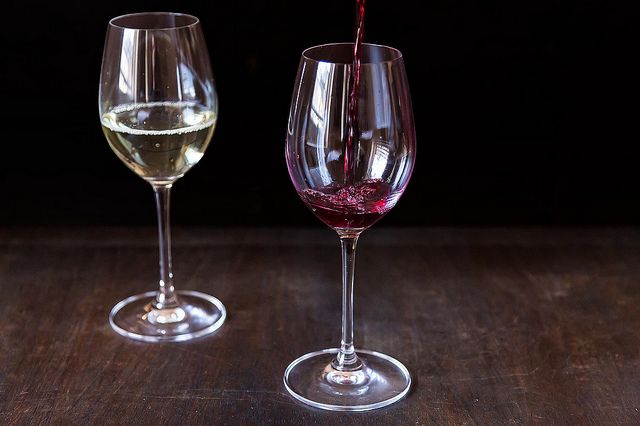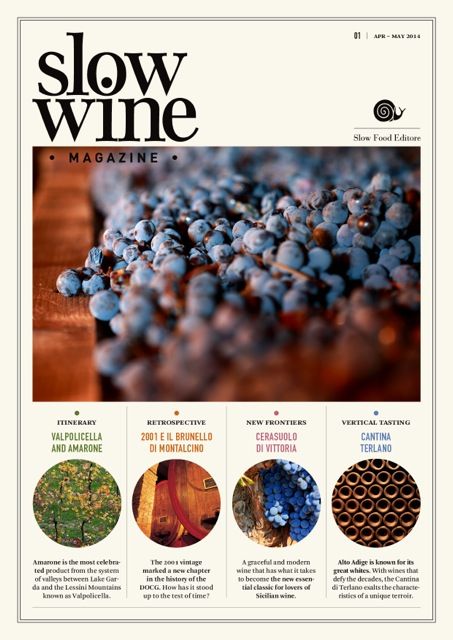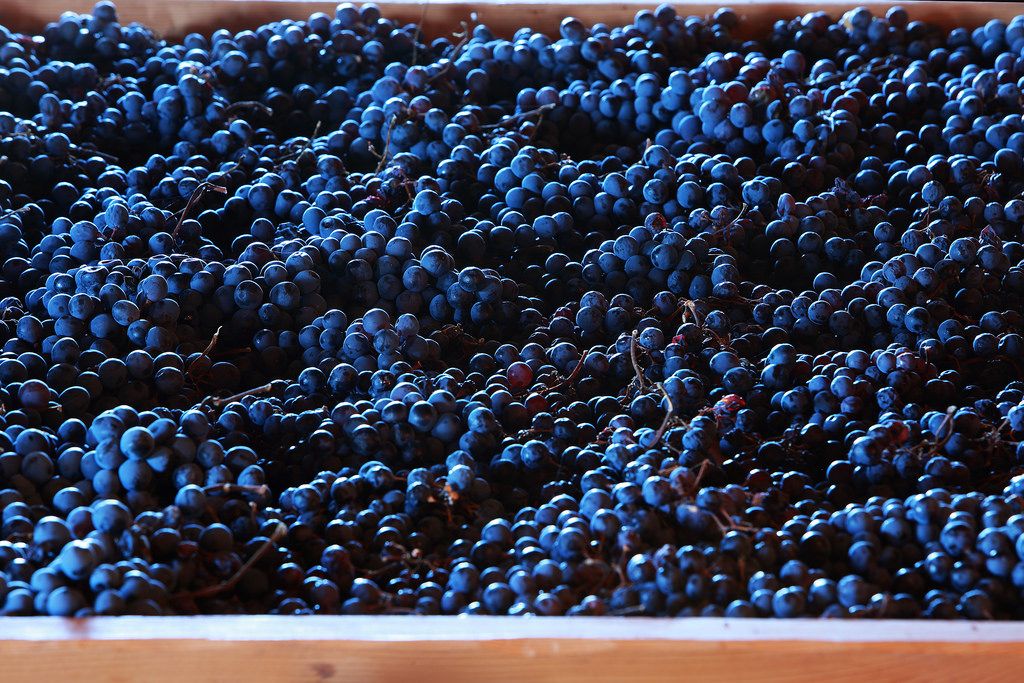We're sitting down with our favorite writers and cooks to talk about their upcoming cookbooks, their best food memories, and just about anything else.
Today: The Slow Wine Magazine is launching stateside -- and we're sitting down (wine in hand) with Senior Editor Giancarlo Gariglio to dish about taste, sustainability, and Italian wine culture.
Love wine, but don't know a thing about it? That's about to change -- and it all starts with the new English edition of the Slow Wine Magazine, a bi-monthly, digital newsletter that will explore, celebrate, and educate its readers about the diverse and abundant Italian wine landscape (plus, the first issue is free!).
Brought to you by Slow Food, the newsletter paints a comprehensive picture of Italian wine culture, with a focus on sustainability, history, and terroir. Slow Wine believes that good wine, just like good food, is about more than taste alone -- it's about the story of its producers, the land it comes from, and the care with which farmers tend to the land. Each edition of the newsletter will thus feature an in-depth look at two viticultural denominations (one established and one lesser known), the history of a winery through horizontal and vertical tastings, and the exploration of a certain terroir.
To find out more about this philosophy, what we should be drinking, and why we should read on, we caught up with Slow Wine Magazine's Senior Editor, Giancarlo Gariglio, who was quick to tell us that "in terms of quality and aging ability, Italian wine is second to none -- not even the French." To some, those are fighting words. Let's step into the ring.
What is Slow Wine? What are the main principles behind it?
Slow Wine is part of the publishing house of Slow Food Editore, a branch of the Slow Food movement. Since Slow Food is headquartered in northern Italy, we have the advantage of being close to the action. We specialize in Italian wineries and have been reviewing them for quite some time; we collaborated with Gambero Rosso as coauthors on the Vini d’Italia guide until 2009. The decision to break off and found Slow Wine was purely a philosophical one; our vision differed a bit too greatly from theirs. Slow Food believes that wine, just as with food, must be Good, Clean, and Fair -- not just good. This means that every aspect of production must fall into line with these fundamental beliefs. Respect for the process is everything -- from sustainable agriculture, to the dominant varietal, to the geographical area.
What importance will the newsletter have for the American public? What can Slow Wine offer that can't be found in other publications?
What we want to offer is clarity, a strong and consistent philosophy, and a singular perspective on Italian wine -- one that you most likely will not find in any blog or magazine in the States. We are based in the heart of wine country, in the northwestern region of Piedmont, and as such have the freedom to easily travel, meet with producers, and taste through flights. Other publications are limited to wines that are already imported in the States, or to brief research trips abroad. Here we live and breathe Italian wine; it is our bread and butter, our passion, and the producers -- our friends. We have over 200 colleagues throughout Italy, and thanks to this network, we will be the first to write about new trends, new viticultural areas, and up-and-coming producers. The Magazine is a tool for the average drinker to get closer to the source, learning about wines and producers that do not yet have a mainstream presence in America.
More: Step 1: Read your newsletter. Step 2: Host your own informal wine tasting.
People like what they like. Why should they also pay attention to how and where wine is made? Why does the traditional point system not cut it anymore when we talk about a wine's quality?
Before someone takes the time to decide whether or not they even like the wine they are drinking, they should realize that wine is an agricultural product, just like any of the food we eat or the beer we drink. Wine production can have an extremely heavy environmental impact -- pesticides, herbicides, and excessive water consumption are all commonplace in conventional wine production. As such, it seems fair to encourage consumers to drink with a bit more consciousness and responsability towards the planet and towards themselves. In addition, artisanal and sustainable wines are often within, if not below, the average consumer's budget. It’s usually larger wineries or independent merchants with larger budgets and fancy labels that buy premade wine and package it themselves.
We aren’t fighting against the point system per se, rather we recognize that it has has somewhat closed in on itself -- you’ll be hard-pressed to see a wine score that dips below 90 points. How is it possible that almost all the wines that are being reviewed, and consequently bought and consumed, are between 90-95 points? For us, the point system isn’t true to the wine itself, but rather representative of the taster’s palate behind the score. This places the burden on the consumer and makes it harder to choose a wine that will end up being to their liking. I believe that the future of our profession is to tell the story of the wine and to offer relevant information, thus leaving the reader free to form his or her own opinion.
More: Learn how to read -- a wine label.

When we think of Italian wine, our scope tends to be fairly narrow -- Chianti, Barolo, Prosecco -- but, the Italian wine landscape is quite diverse. With that in mind, which Italian wines do we often skim over on a menu that deserve a second look?
This is a subject that is very dear to my heart. In Italy alone there are almost 400 different grape varieties, and about 200 of them are truly worth getting to know. This is one of the goals of the magazine, one of the reasons we decided to create a publication like this -- to raise the awareness of the incredible biodiversity of varietals and wines that is our heritage and our legacy. It is our responsibility to protect them. We are creating a space in which emerging producers, terroirs, and styles are given the ability to tell their story -- you hear it directly from the source.
I'm in a wine shop without my Slow Wine guide. How do I go about picking a good, responsibly produced bottle? Can I tell from the label?
This is no simple task. I’d say that a good rule of thumb would be to see if the wine is certified (organic or biodynamic), and if it is produced entirely at the source. Checking to see if it is a DOC or DOCG is also a good start. Your best bet is to talk to the salesperson in the store -- they are generally full of useful information and should know all the wines the store offers. I think that’s the best way to choose a wine that meets all your requirements. Plus it's an excellent -- and free! -- way to learn about wine.
More: What's the deal with biodynamic wines? We'll give you the lowdown.
Translation by Elisabeth Fiorello-Sievers, photo of wine glasses by James Ransom, all others by Mauro Fermariello





See what other Food52 readers are saying.